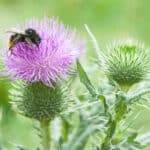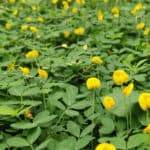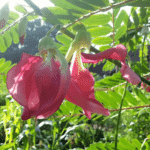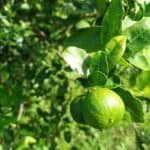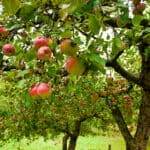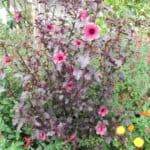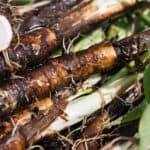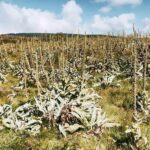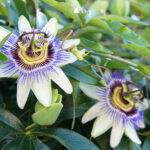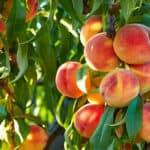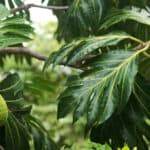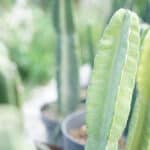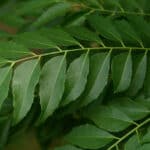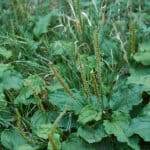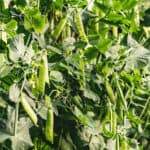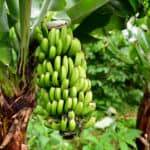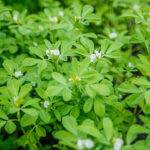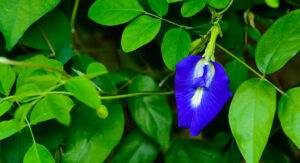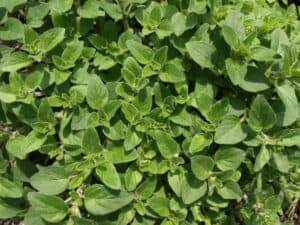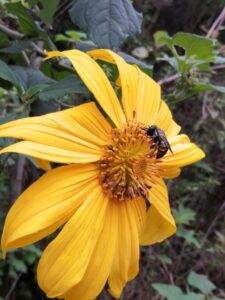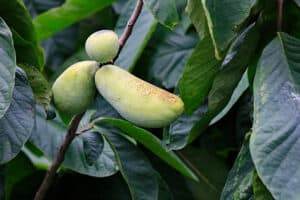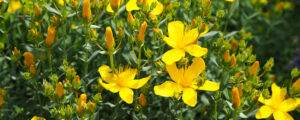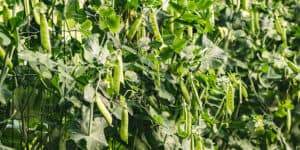Perilla – An Asian Herb with a Kick!
If you haven’t tasted the mint-like herb Perilla, you are in for a great experience! This herbaceous plant (Perilla frutescens) is from the Mint family and originated from the Indian subcontinent. Today, it has become widely used in Japan, Viet Nam, Korea and other Asian countries.
Perilla is also referred to in Japan as the Shisho leaf. The words can be used interchangeably.
People consume the leaves and the seeds which can be made into a healthy oil. It is a very beautiful plant and can come in different colors.
The leaves have corrugated edges that are about 6 cm long. There are some varieties that have bright pink and white leaves resembling a coleus. Others are only green.
The one that I enjoy growing is a mix of purple and green.
It can grow to be 60- 90cm (24-36inches) tall. This provides a really nice backdrop in your herb garden or food forest. If the climate is warm enough, it is very easy to grow.
Also, it is heavily valued as a medicinal plant in Asian cultures. Perilla can help coughs, flus, asthma, and provide balance to the body. So whether you want to add this to your medicinal garden or herb garden, it will give you a lot of benefits!
Once the plant flowers, it will die. This makes it an annual plant. However, if you pick off the flowers, you can prolong life for a while.
Perilla leaf can be toxic to cattle, so keep your cows away from it! Continue reading to find out how to grow this plant in your garden.
Propagation and Planting
There are 3 main ways you can propagate Perilla. These are from a seedling, seed or cutting. The easiest and cheapest way to start it is by cutting.
These plants root very easily from cuttings. This is one way to keep the life of one plant going for years. Simply, take cuttings from where the offshoot stems meet the main stem.
To ensure the health of your mother plant, sterilize your scissors with rubbing alcohol before taking your cutting. As long as the plant is big enough, you can take multiple cuttings.
Once your cuts have been made, remove the bottom leaves to expose the stem. Place them in a cup or jar of water. Make sure that the leaves do not droop into the water.
You can put the jar in a windowsill or somewhere that receives indirect sunlight. In a week or two, you should see roots starting to form at the base of the stem.
Once the roots get bigger, you can plant these into pots or directly into your garden. From there they will quickly grow more leaves.
If you do not have access to a Perilla plant, then you can purchase the seeds and start that way. They are very tiny seeds so you do not need to plant them deep. Sprinkle them just underneath the surface of the soil. It should take between 2 weeks to one month for the sprouts to emerge.
Growth and Care
Find a spot in your garden that gets full sun or partial sun. Try to give your plants at least 4 hours of sunlight per day. The more sun it receives, the bigger it will grow.
When you first put your plants in the ground, mulch heavily around the base of the plants to keep the weeds out. The only other regular maintenance you need is to keep pulling the weeds.
Water the plants when the soil dries out. It needs around 1 inch of water per week. If the leaves look dry and wilted give it water immediately. Do not keep the soil too moist because the stems will rot.
The most common pests that attack perilla are spider mites and aphids. A common disease that affects Perilla is Downy Mildew. The best way to ensure your plants do not get infected is to water the roots and not the leaves. When there is a lot of water that sits on the leaves, it creates a condition for mildew to thrive.
Plant the herb with a scoop of compost at the base of the plants. If you mulch correctly, you shouldn’t need to add extra fertilizers because the plant is very strong. Although, if you have poor soil health, you may need to add some more compost twice a year.
Harvesting
Now comes to the fun part! Harvesting perilla is very easy. You harvest it the same way you would mint or basil.
Cut the offstems where they meet the main stem. Since Perilla has such a strong flavor, you do not need too many to get that taste. If you do not want to harvest a whole branch, you can simply pluck off individual leaves from the branch.
Make sure to pull off the flower heads when you see them. Aside from that, it is a very easy herb to pick, harvest and use.
If you want to use the seeds, you have to let the plant go through its whole flowering cycle. Once the flower heads are dry you can pick them. Crush the flower pods between your fingers and thumb. Small, black seeds will come out.
They are really small and will roll around very fast, so make sure you have a container to collect the seeds.
Processing and Utilizing
There are many ways to use Perilla and feel free to be creative. It is a great leaf to wrap things in.
You could wrap things like BBQ meats, crispy savory pancakes, mushrooms, tempeh and anything else! For a nice vegan meal, I make some crumbled tempeh and use the perilla leaves to pick it up.
This makes for a savory dish with a minty kick. The flavor is not too strong. It provides just the right balance to make your mouth water.
In Korea, they marinate the leaves with Chilli, oil, vinegar, and soy sauce. After that they stir fry it with some garlic.
Vietnamese love serving it as a garnish. It is typically served with Banh Xeo, which is a delicious savory, crispy shrimp pancake. The pancake is wrapped inside the perilla leaf.
This is one of my most favorite flavor combinations in Vietnamese food.
If you harvested the seeds you can make a seed powder or oil.
Seed powder is a great way to store the nutty perilla flavor for a long time. The powder adds a creamy and thick texture to dishes.
To make the powder, dry the seeds and grind them in a blender. Grind them until they become a fine powder. After that you can sprinkle it into whatever dish you please.
Perilla is a good addition for many different dishes. Have fun experimenting and enjoying this herb!




